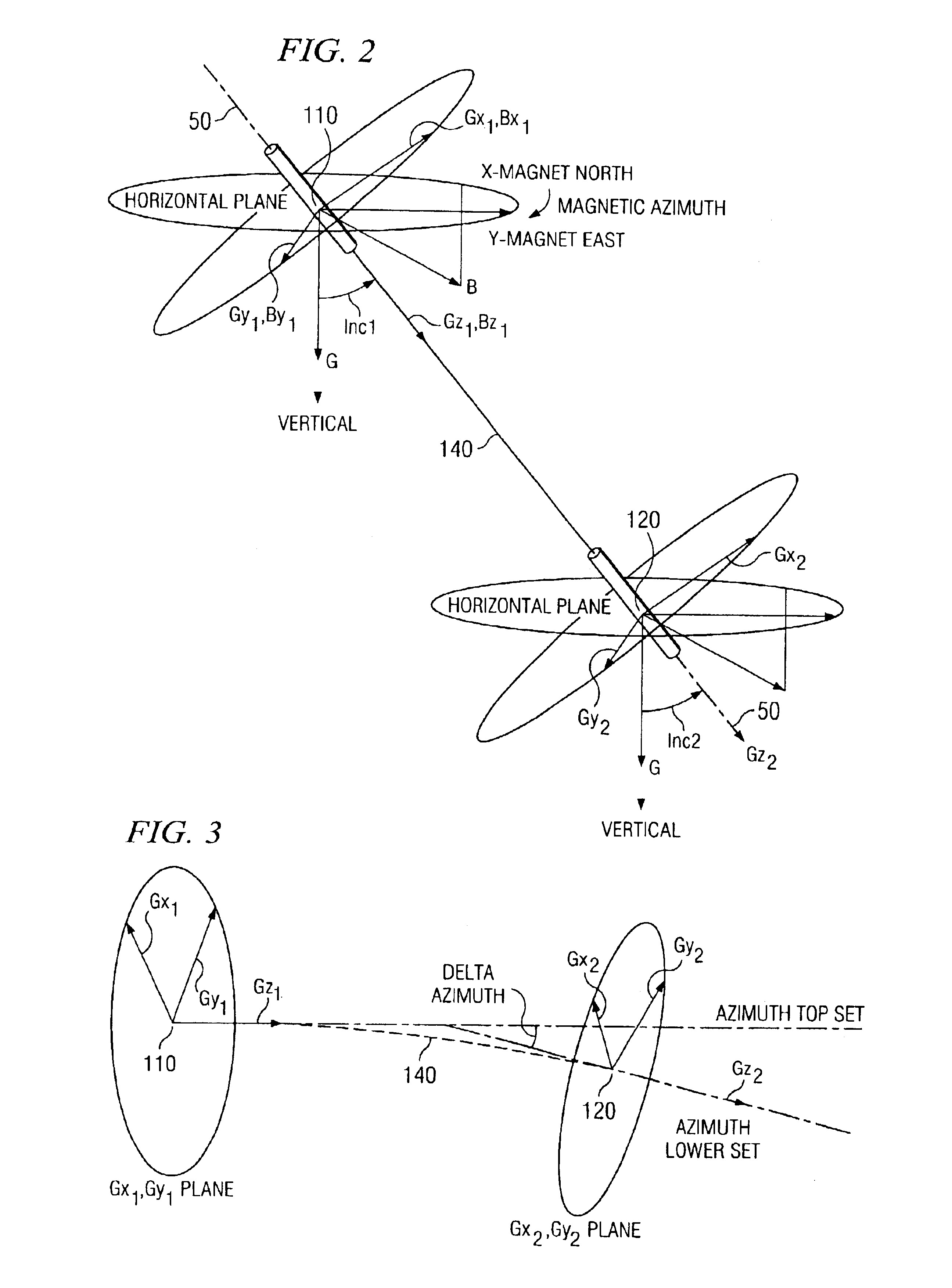Passive ranging techniques in borehole surveying
- Summary
- Abstract
- Description
- Claims
- Application Information
AI Technical Summary
Benefits of technology
Problems solved by technology
Method used
Image
Examples
Embodiment Construction
[0029]Referring now to FIG. 1, one exemplary embodiment of a downhole tool 100 according to the present invention is illustrated. In FIG. 1, downhole tool 100 is illustrated as a measurement while drilling (MWD) tool including upper 110 and lower 120 sensor sets coupled to a bottom hole assembly (BHA) 150 including, for example, a steering tool 154 and a drill bit assembly 158. The upper 110 and lower 120 sensor sets are disposed at a known spacing, typically on the order of about 10 to 20 meters (i.e., about 30 to 60 feet). Each sensor set (110 and 120) includes at least two mutually perpendicular gravity sensors, with at least one gravity sensor in each set having a known orientation with respect to the borehole.
[0030]Referring now to FIG. 2, a diagrammatic representation of a portion of the MWD tool of FIG. 1 is illustrated. In the embodiment shown on FIGS. 1 and 2, each sensor set includes three mutually perpendicular gravity sensors, one of which is oriented substantially paral...
PUM
 Login to View More
Login to View More Abstract
Description
Claims
Application Information
 Login to View More
Login to View More - R&D
- Intellectual Property
- Life Sciences
- Materials
- Tech Scout
- Unparalleled Data Quality
- Higher Quality Content
- 60% Fewer Hallucinations
Browse by: Latest US Patents, China's latest patents, Technical Efficacy Thesaurus, Application Domain, Technology Topic, Popular Technical Reports.
© 2025 PatSnap. All rights reserved.Legal|Privacy policy|Modern Slavery Act Transparency Statement|Sitemap|About US| Contact US: help@patsnap.com



